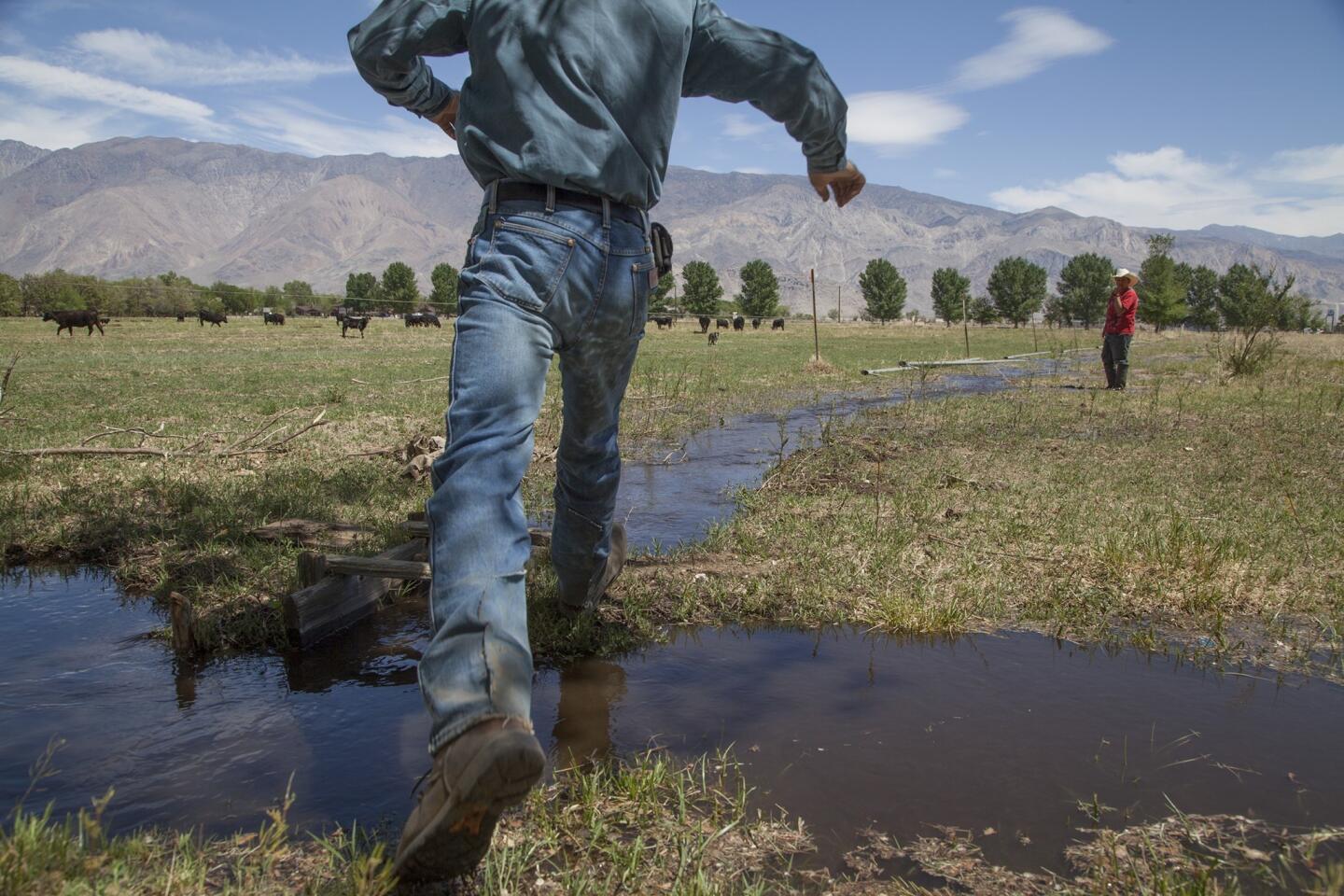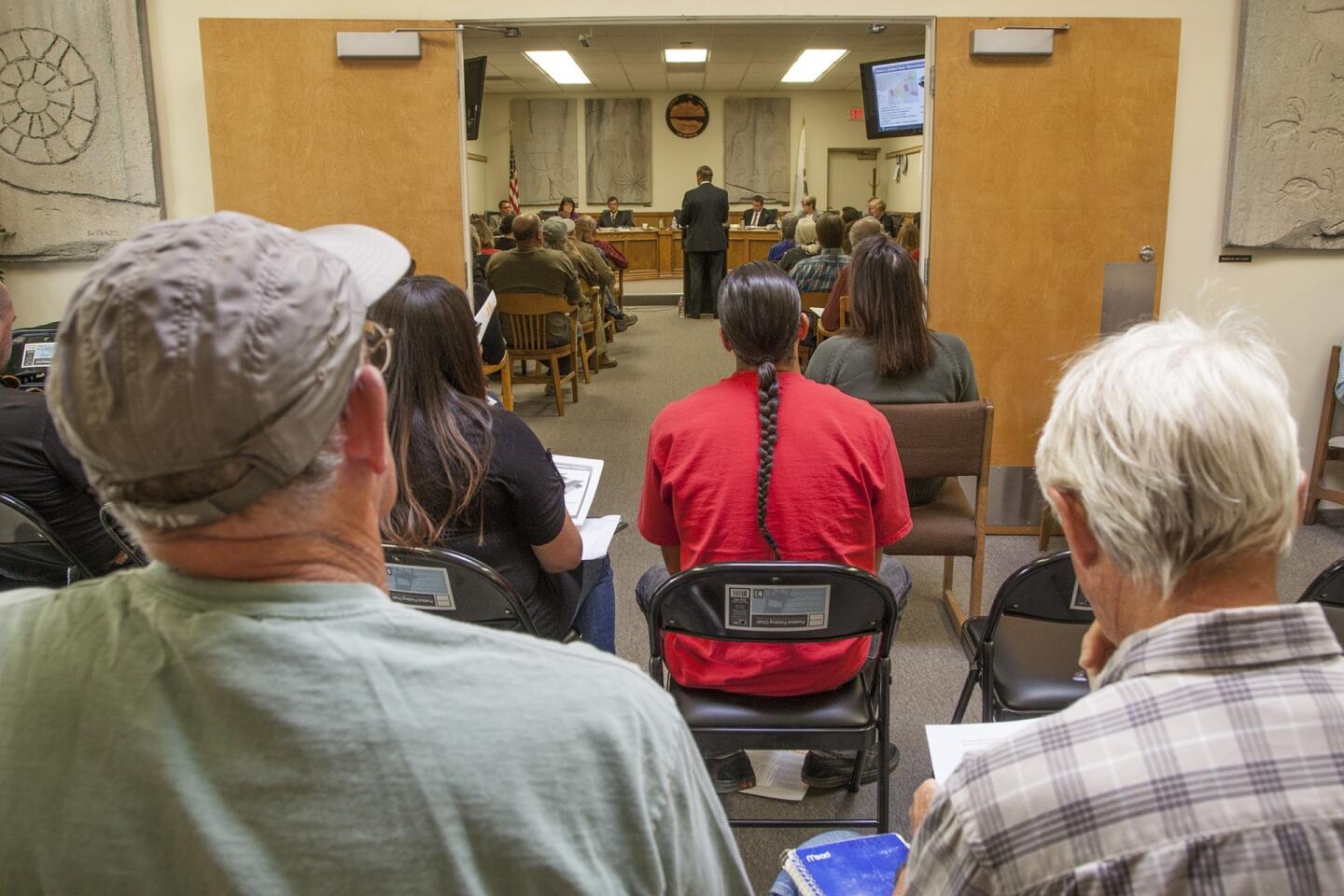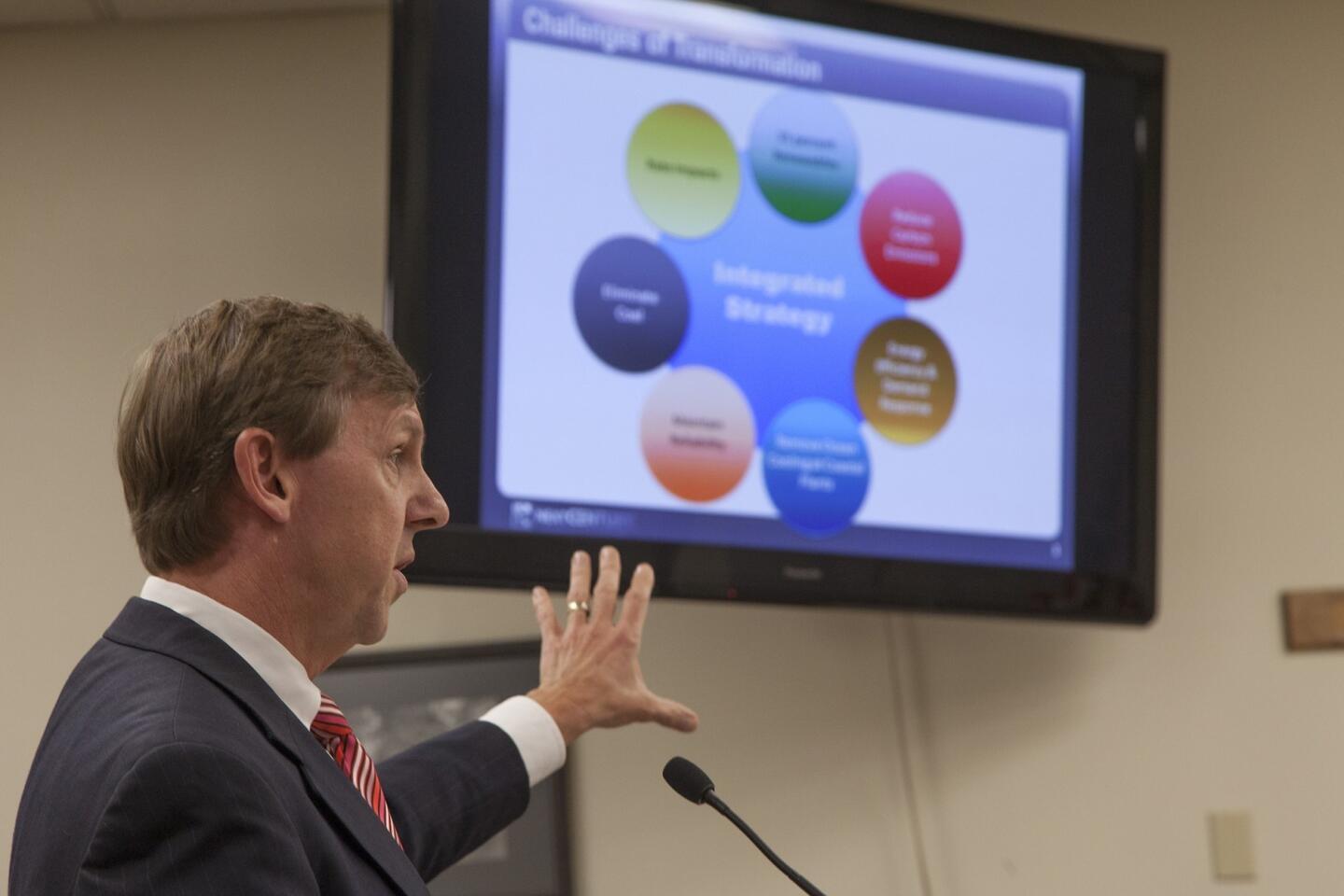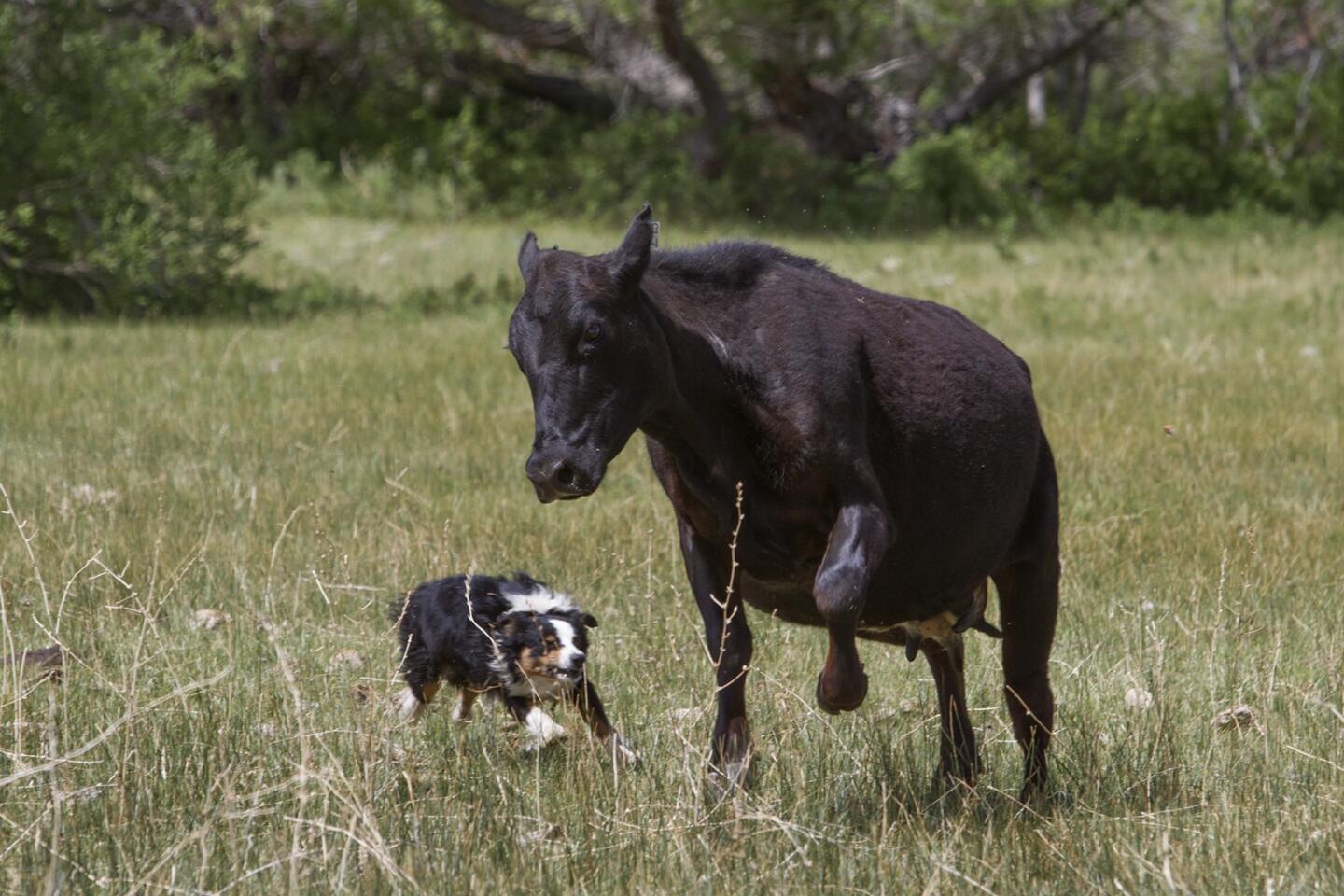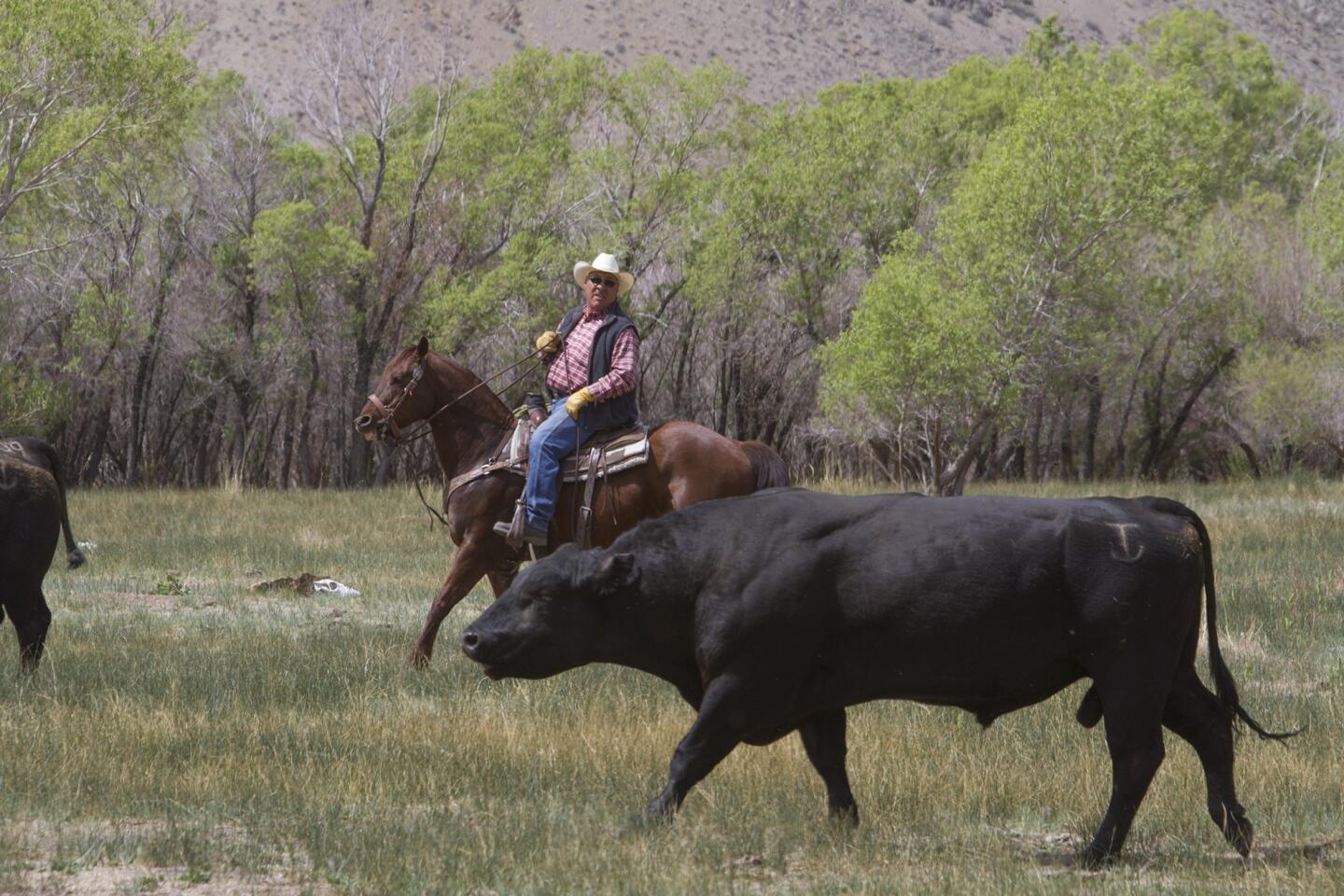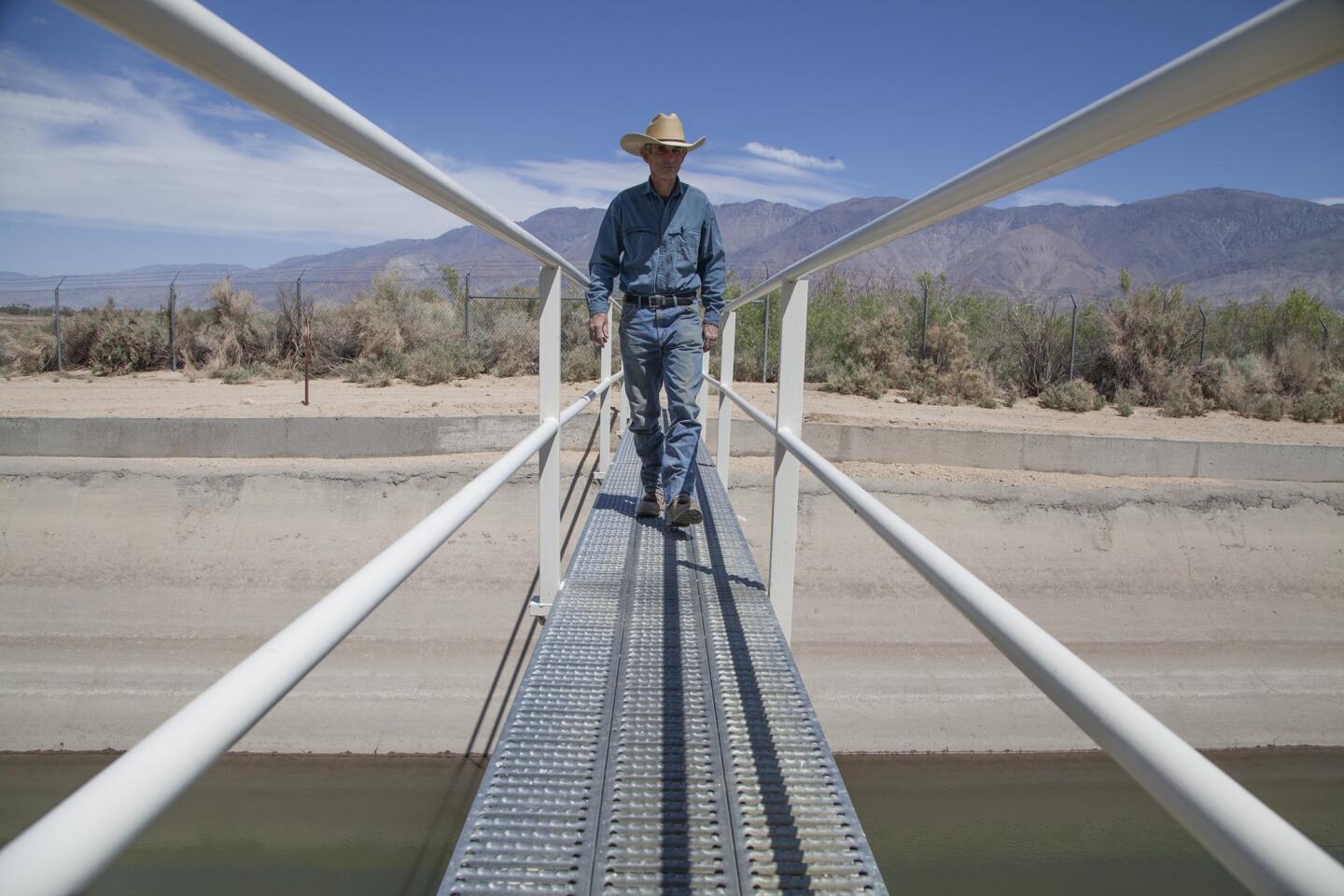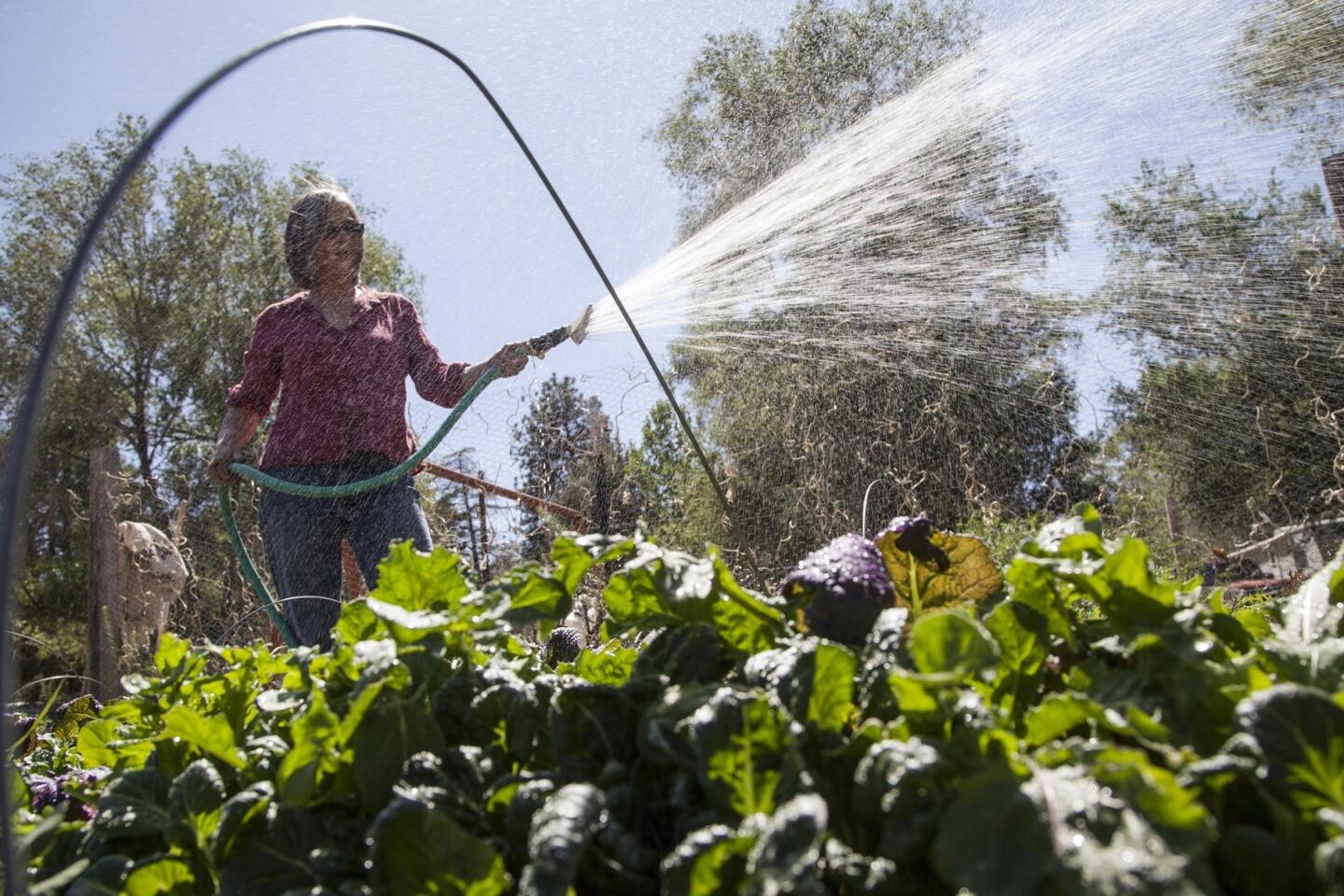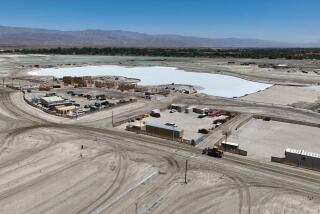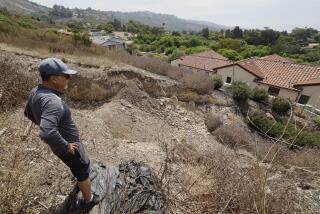Owens Valley mobilizes against proposed DWP solar project
INDEPENDENCE, Calif. — One by one, a parade of Owens Valley residents rose at a public hearing Tuesday to assail the Los Angeles Department of Water and Power’s plan to meet its renewable energy goals by covering 2 square miles of high desert with 1 million solar panels.
“We believe in economic development — but this is not the kind we want,” Jane McDonald, who helps run a farmer’s market, said at the DWP’s first public presentation of the project during an Inyo County Board of Supervisors hearing. “Protection of our livelihoods depends on protection of this landscape.”
It’s a point frequently made as the DWP tries to smooth relations in rural eastern Sierra Nevada communities that are up in arms over the $680-million project, which would generate fewer than 10 permanent jobs and no property-tax revenue.
The Southern Owens Valley Solar Ranch, on city-owned property, would produce enough power annually to serve about 75,000 homes. The electrical energy produced by its photovoltaic panels would be conveyed to the power grid from a 300,000-square-foot substation to a nearby DWP transmission line.
It is the last facility needed to boost the city’s use of wind, solar and other renewable energy sources to a third of total supply by 2020, officials said.
Michael Webster, head of power system planning and development at the DWP, said in an interview that the pushback — in a region where many residents already regard the utility and city as overbearing landlords — “is something our engineers and commissioners are struggling with right now. We need to make a final decision in the next few months.”
Randy Howard, the DWP’s interim executive director of customer service, was more blunt: “I’m looking hard for any option that would lead to a better project than the one in Owens Valley. We haven’t given up on it yet.”
Many speakers at the hearing said they would prefer to see solar projects on rooftops in Los Angeles, or on disturbed land.
The opposition is part of a larger struggle to prevent industrialization of Owens Valley’s tableaus of streams, lava flows and cinder cones hemmed by the Inyo Mountains to the east and snaggletoothed Sierra peaks on the west.
Critics also contend that it would destroy a key element in understanding what Japanese American internees experienced a few miles away during World War II at what is now the Manzanar National Historic Site: a sense of isolation.
Inyo County has little say in the project, roughly 200 miles north of Los Angeles. But it recently agreed to accept a DWP offer of $4 million to cover the costs of effects on roads and services, and a $2-million loan to develop short-term housing for construction workers.
That was cold comfort to an alliance of the Owens Valley Committee, Native American tribes, cattlemen, conservation organizations, the National Park Service and members of local nonprofits receiving grant funds from the Metabolic Studio, a direct charitable activity of the Annenberg Foundation, one of the world’s largest family philanthropic organizations.
Its leaders include a former Inyo County clerk; a former union organizer; a vacation ranch owner; and a USC doctoral student who created a new website — DeepestValley.com — that has become a hot spot for mobilizing protesters.
“The sophistication and organizational skills of the opposition are unprecedented,” Inyo County Supervisor Jeff Griffiths said in an interview. “Some people think that we may be witnessing the birth of historic empowerment in terms of the county’s relationship with the City of Los Angeles.”
Yielding to pressure, Inyo County in April abruptly reduced the size of its proposed renewable energy development zone by 50%, excluding the city’s solar ranch site.
“We’re also doing further planning to determine how the Inyo County community would like to proceed with renewable energy development in Owens Valley, if at all,” said Joshua Hart, Inyo County’s planning director.
Lifelong Owens Valley residents and ranchers Tom Noland, a past president of the Inyo, Mono and Alpine Cattlemen’s Assn., and Mark Lacey, who leases 33,000 acres from DWP near the solar ranch site, have their minds made up.
“We don’t want it,” Lacey said. “Ranching is our calling. This valley is our most valuable resource. They want to cover it up with solar panels.”
@LouisSahagun
